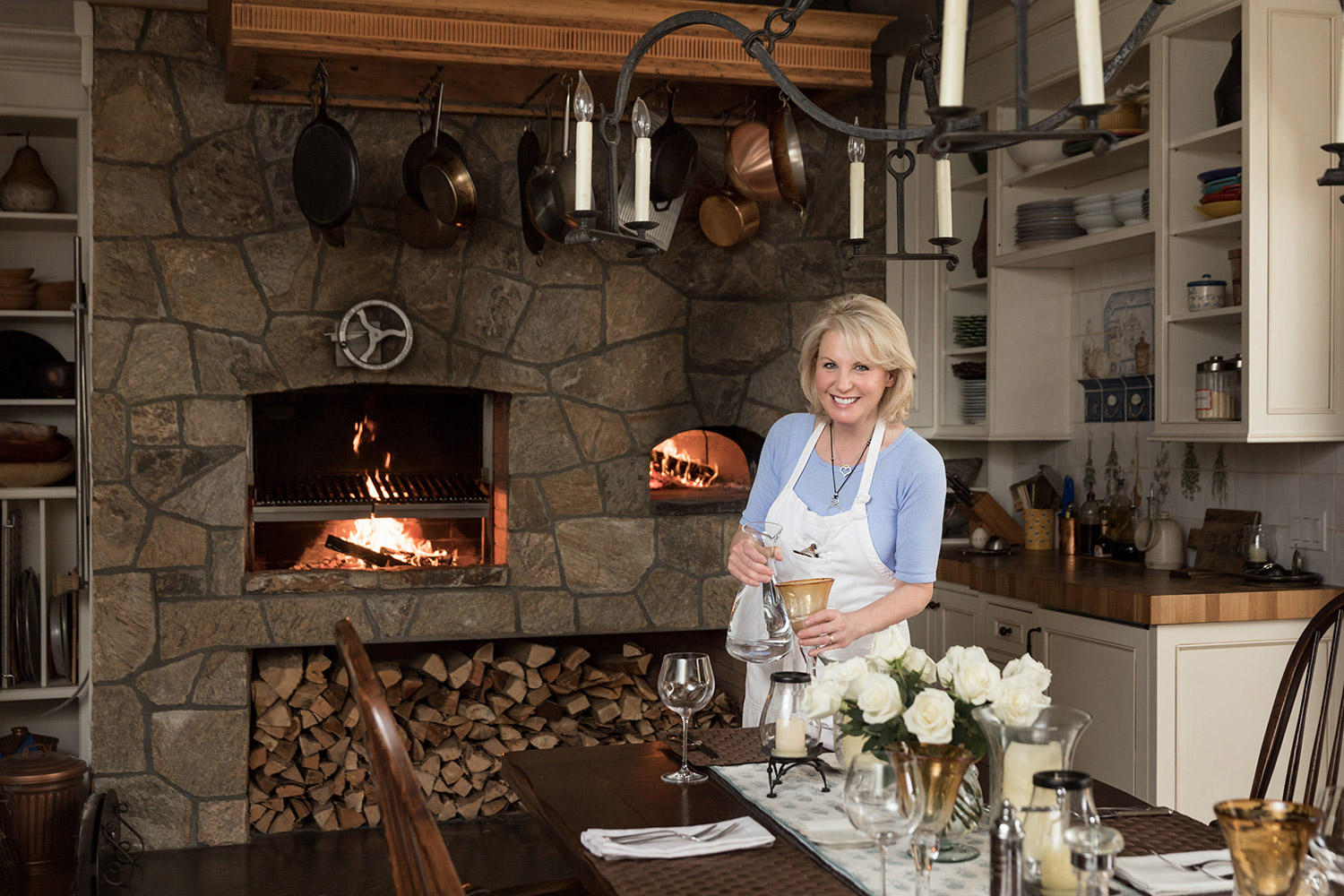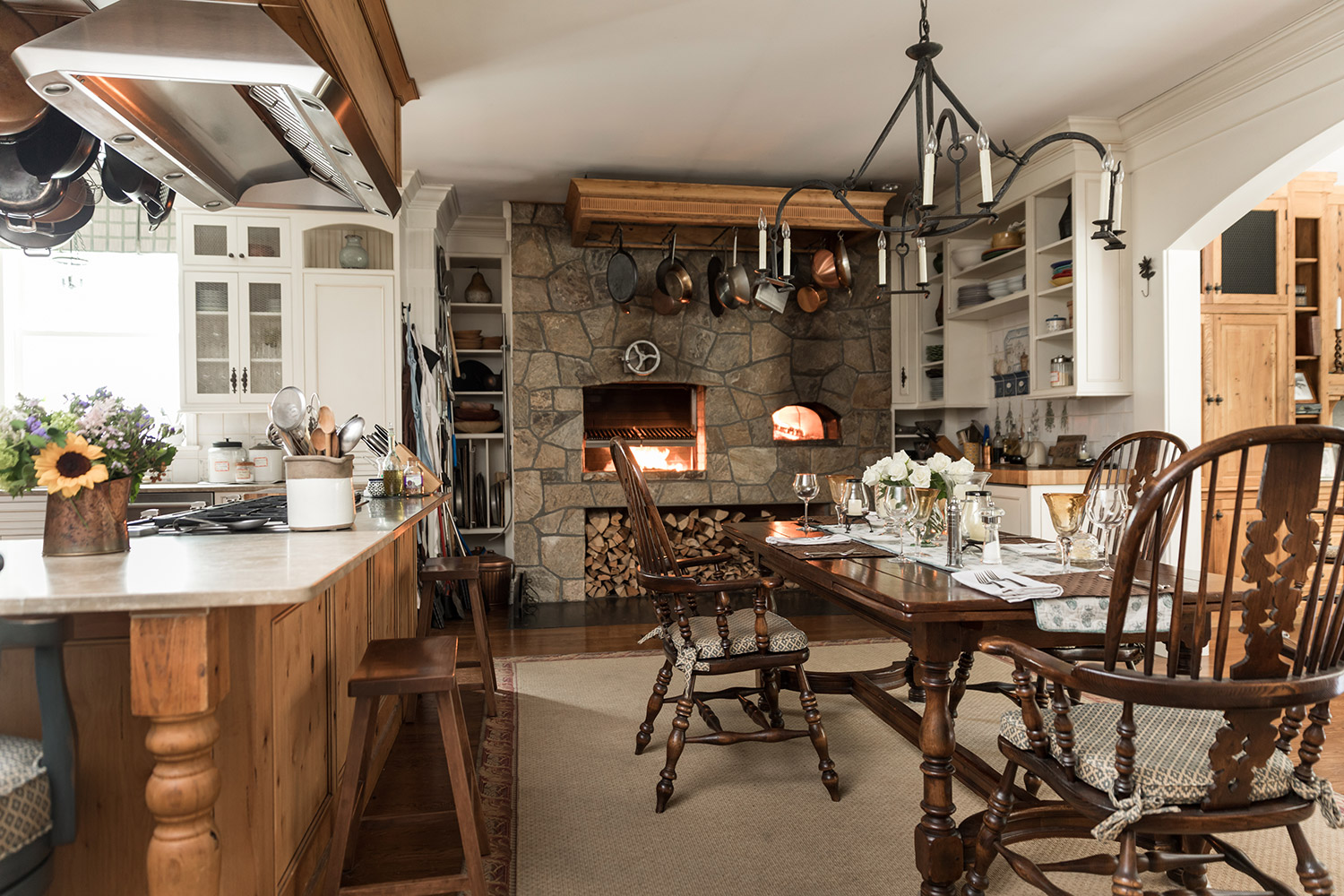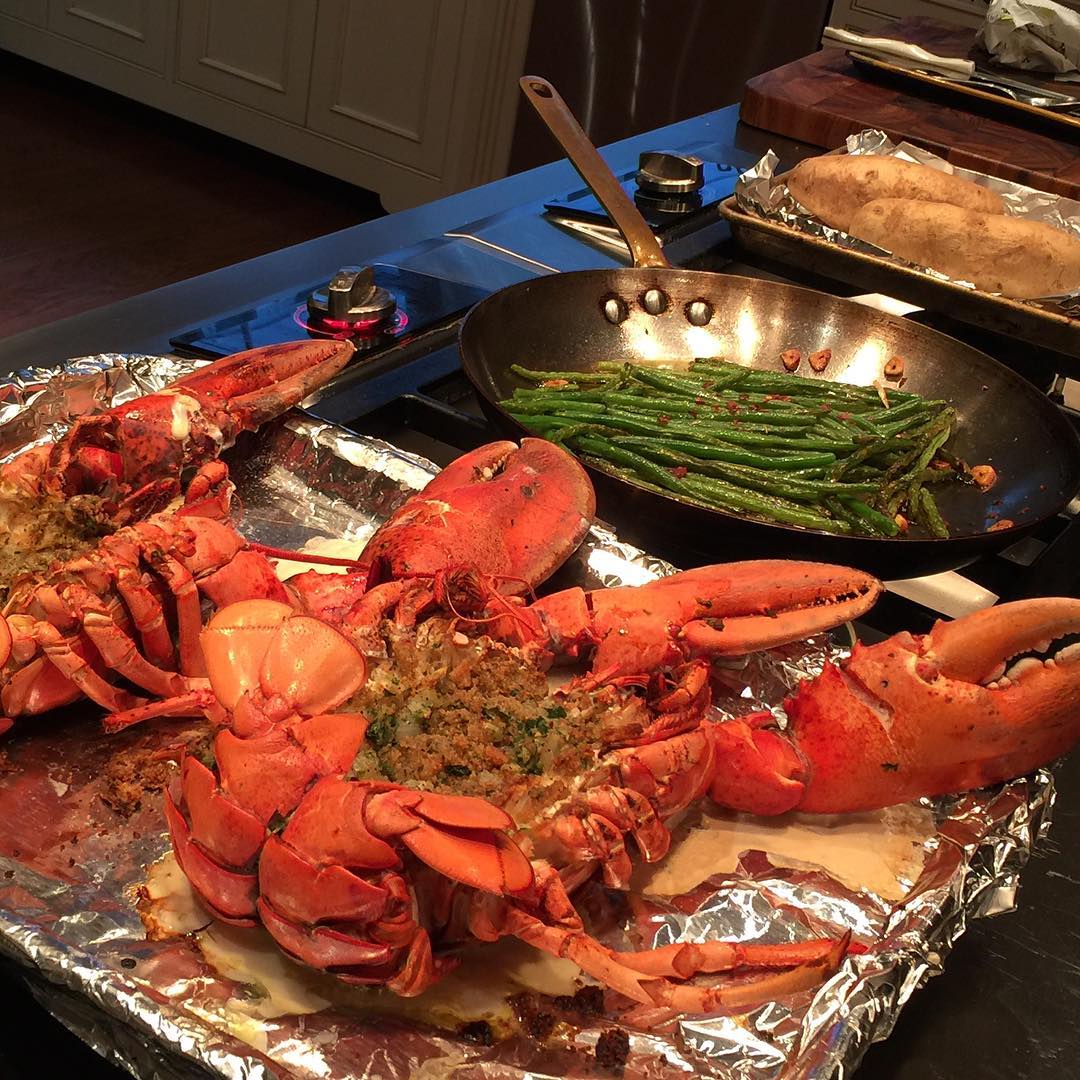
A beautifully set table will turn a simple, casual meal into a festive occasion. And conversely, an improperly, shoddily set table will not only detract from the food you’ve created but also can cause confusion for your guests. An elegant, inviting table does not require a lot of expense or family heirlooms. Just a little time, imagination and a few touches like flowers and candles will tell your guests that you really care. Whether the event is a family-style soup supper or a formal multicourse dinner, here are a few tips for your table.
I usually set my table the day before entertaining, not only for convenience–seeing the table beautifully assembled, puts me in the mood for the wonderful evening to come. I also arrange fresh flowers either the evening before or early on the day of entertaining to enable the petals to open. Instead of a traditional bouquet, fill small individual bud vases with an assortment of fresh flowers and stagger them down the length of the table. Alternatively, center the table with a bowl filled with plump, deeply colored assorted vegetables, and tuck among them small bunches of fresh herbs (such as thyme) for a wonderful fragrance. Always include candles (even unlit for a luncheon), but take care with the height and position. There’s nothing worse–even at the most exquisitely dressed table–than having to play peekaboo with a pot of pansies in order to see your dining companions across the table. So, don’t place a tall bouquet or candelabra smack in front of a place setting.

When setting a table, only those utensils required by the menu should be placed on the table. And make sure there’s a comfortable distance between the center of one person’s plate to the center of the adjoining plate. All flatware should be lined up evenly along the bottom edge of the plate in the order of use, from the outside to the plate. The rim of the empty dinner plate (or service plate for a formal meal) should be one inch from the edge of the table. (If you will be serving a salad course to start an informal meal, place the empty salad plate in the center of the dinner plate.) Arrange the napkin to the left of the plate, either under the forks or to the left of them. (Napkins with pretty frills should be folded so the frill is facing out to the left.) At a formal dinner, place the napkin on the serving plate, using a decorative fold or a napkin ring.
Time-tested rules govern the placement of flatware and also instruct guests (without being told) which knife, fork or spoon to use for each course. Most forks go to the left of the plate in the order of use, beginning from the outside. If you are serving a salad course before the entree, for example, the short-pronged salad fork should go to the far left, but if you plan to serve the salad after dinner, the salad fork goes between the dinner fork and the dinner plate. Most knifes go to the right of the plate with the cutting edge facing the plate. If providing a fish knife or a steak knife, it goes to the right of the dinner knife. And if a salad knife is required, it goes to the far right or far left, depending on the sequence of a salad course. Teaspoons (for coffee or tea) go to the right of the dinner knife and a soup spoon, if using, or a cocktail fork goes to the far right of the knives. Dessert utensils, however, are a different matter altogether. Dessert forks and spoons should be placed (horizontally) above the top rim of the dinner plate with the prongs of the fork pointing to the right and the bowl of the spoon facing left; if using both, the fork goes above the spoon.
Other elements of a place setting include bread and butter plates and knives. These go to the upper left of the dinner plate, just over the forks; the butter knife goes across the plate with its handle on the right and its cutting edge facing the forks. If you are supplying individual salt and pepper dispensers for each guest, they go above the forks, to the left of the dessert utensils; if two guests will be sharing these, place them in between them. Glasses should be placed above the knives, with the water goblet above the first knife and the wine glass to its right. If there are several glasses for multiple wines, group them in a semicircle (from left to right) in the order of use or place them in order of height, descending from the water goblet toward the right. (Only remove a wine glass when it’s empty, even if a new wine has been poured.) Finally, when a hot beverage will be served with the meal, the cup and saucer should be placed to the upper right of the teaspoon. But if coffee will be served in the living room after the meal, accompany each cup with a teaspoon placed on the saucer.
Before you announce to your guests that “dinner is served,” be sure to light the candles and pour ice water into the goblets–but don’t pour wine until your guests are seated. Food may be served already portioned on individual dishes or from a large platter, but remember to serve from the left side and clear used plates and utensils from the right. (Of course, an informal meal can be just served family-style by placing big bowls and platters of food on the table for the guests to pass around and help themselves.)
For an informal dinner, you may place the plate or bowl containing the first course (appetizer, salad, or soup) directly on the dinner plate after the guests are seated. Then remove it, leaving the dinner plate until the entree is ready to serve. For a very formal affair, place the appetizer plate on a service plate; then remove both plates and replace with a dinner plate immediately. There should always be a plate in front of each guest.
In addition to great food and atmosphere, memorable entertaining depends on a good mix of people. Always give as much thought to your guest list as you do to your menu. And don’t stand on ceremony. Even if you have the seating all planned, you might notice that one guest is getting along especially well with someone new. Sit them together. Be flexible and remember that the more relaxed you are, the more comfortable your guests will be.
One more thing. It’s a good idea to ask your guests before you plan your menu if anyone won’t eat something specific, due either to an allergy or for religious reasons, or if they just plain don’t like a particular food. It would be a shame to learn about these “issues” at the table (don’t you think?)
